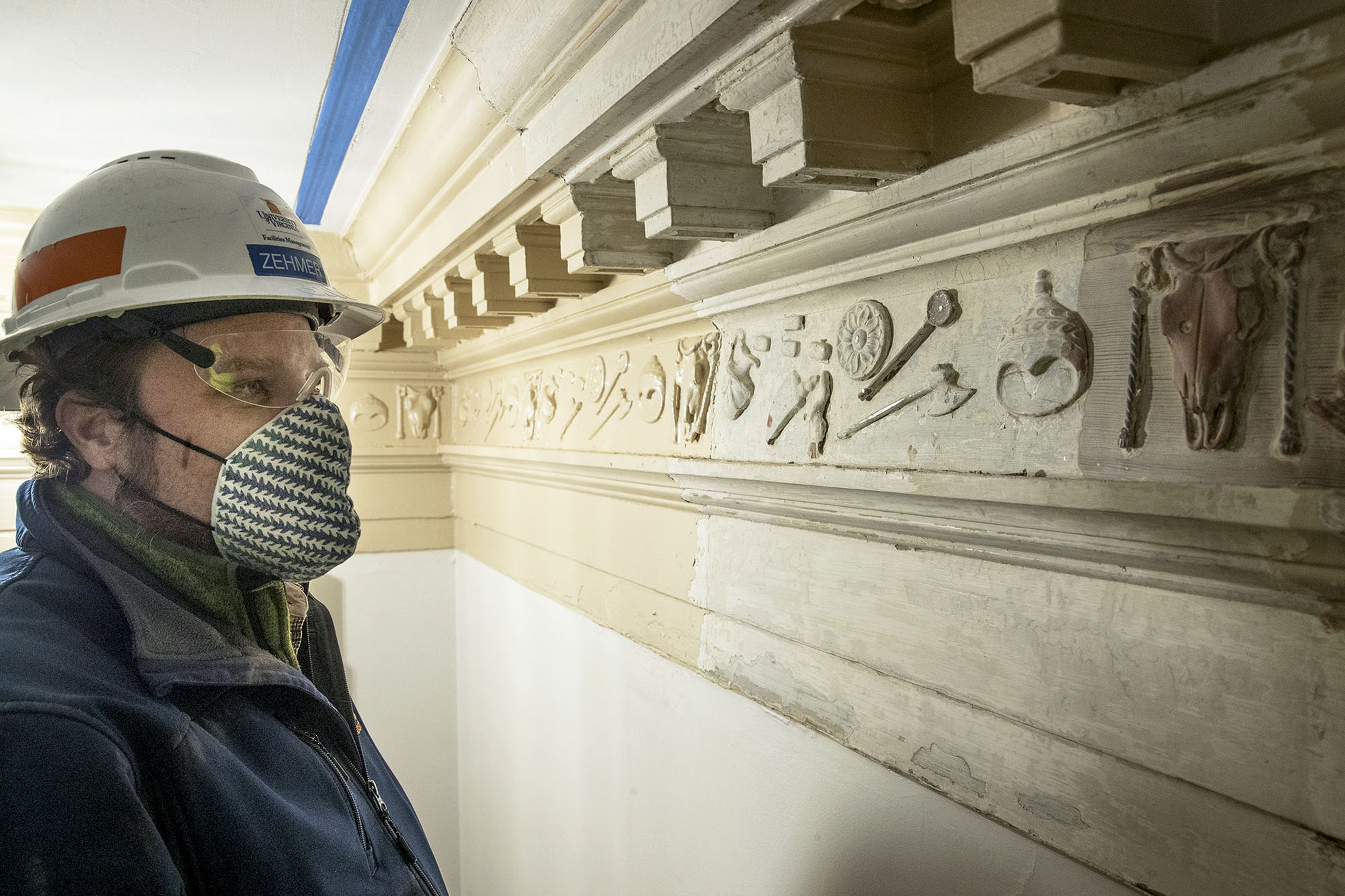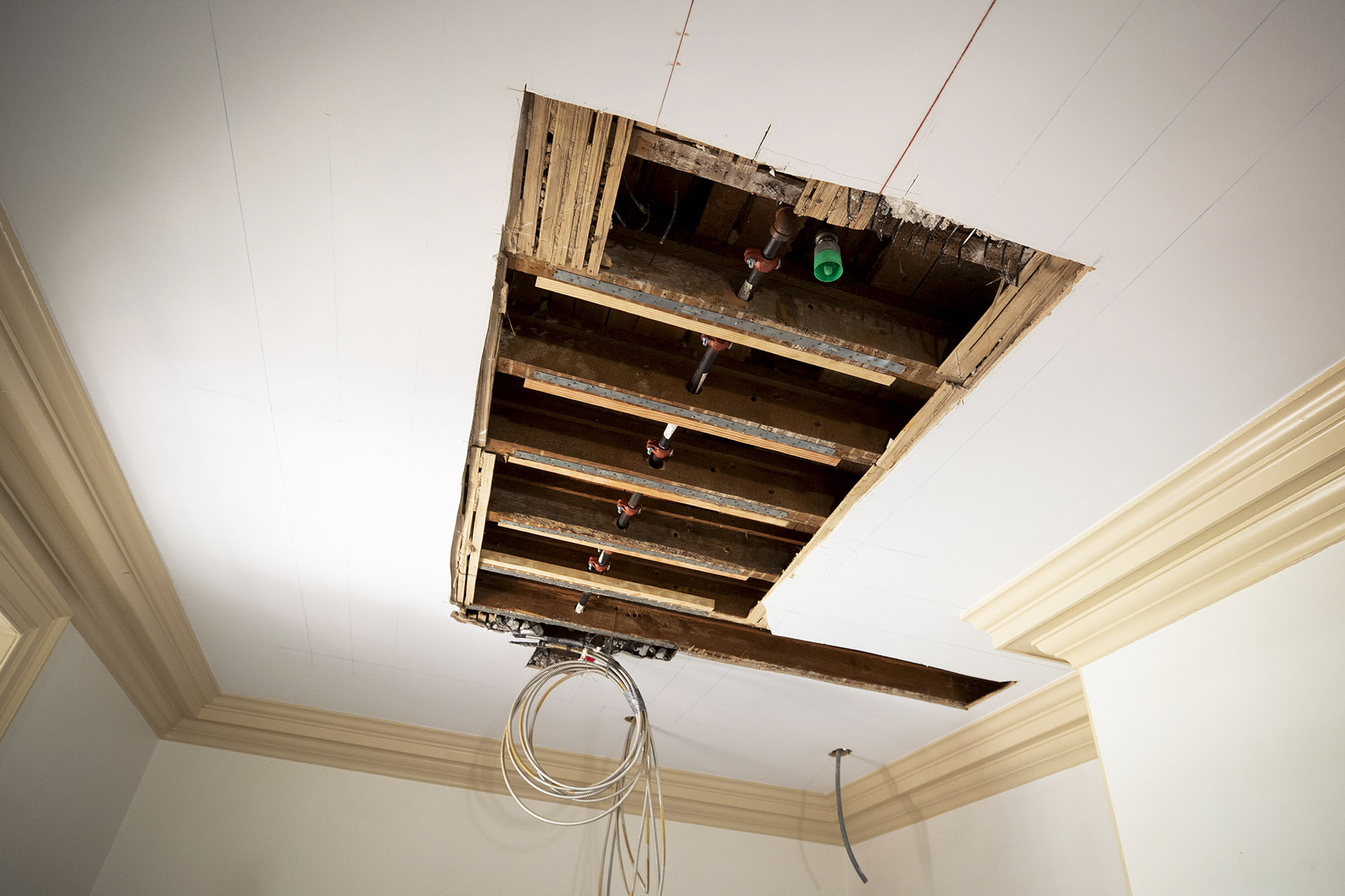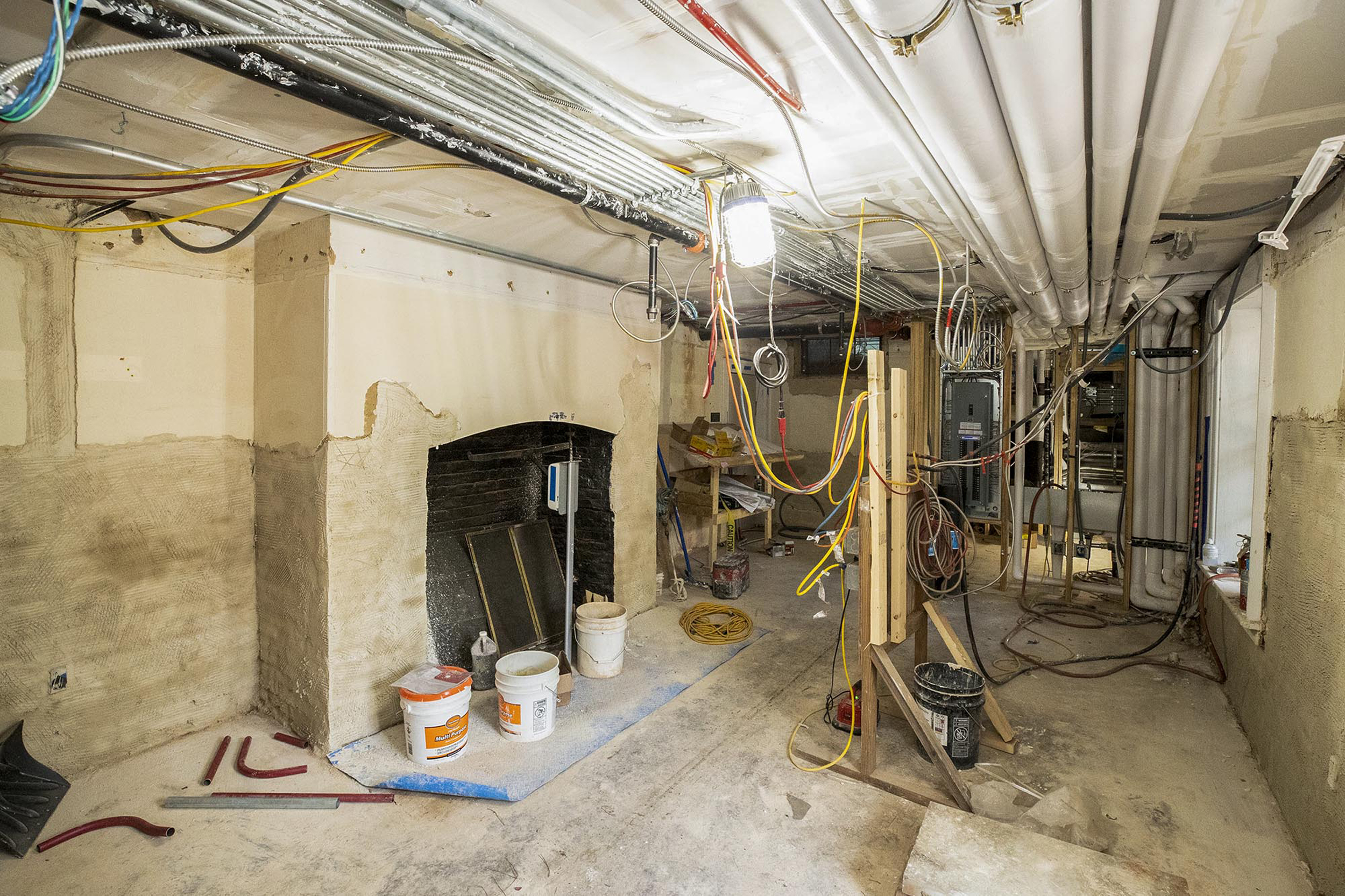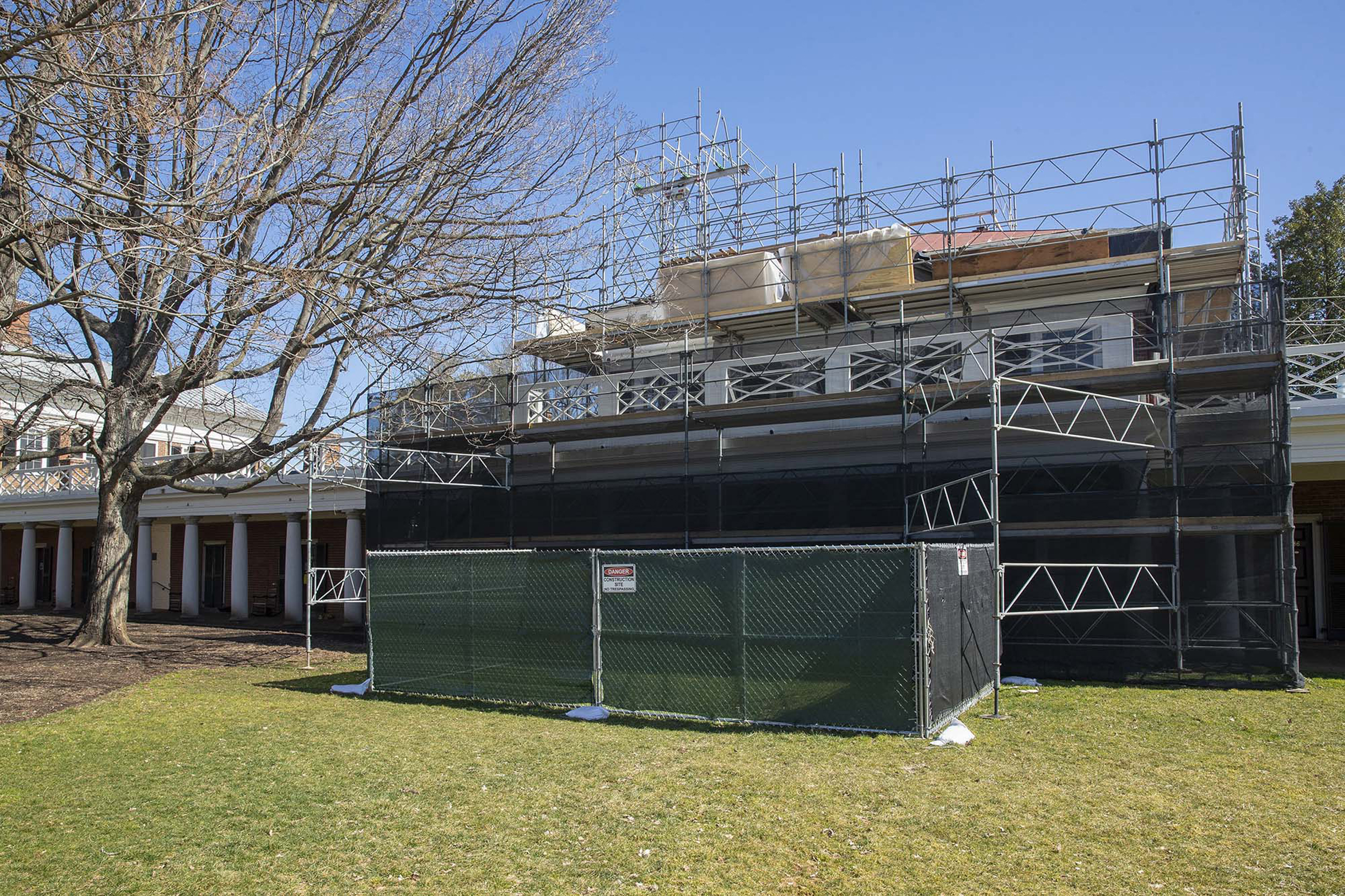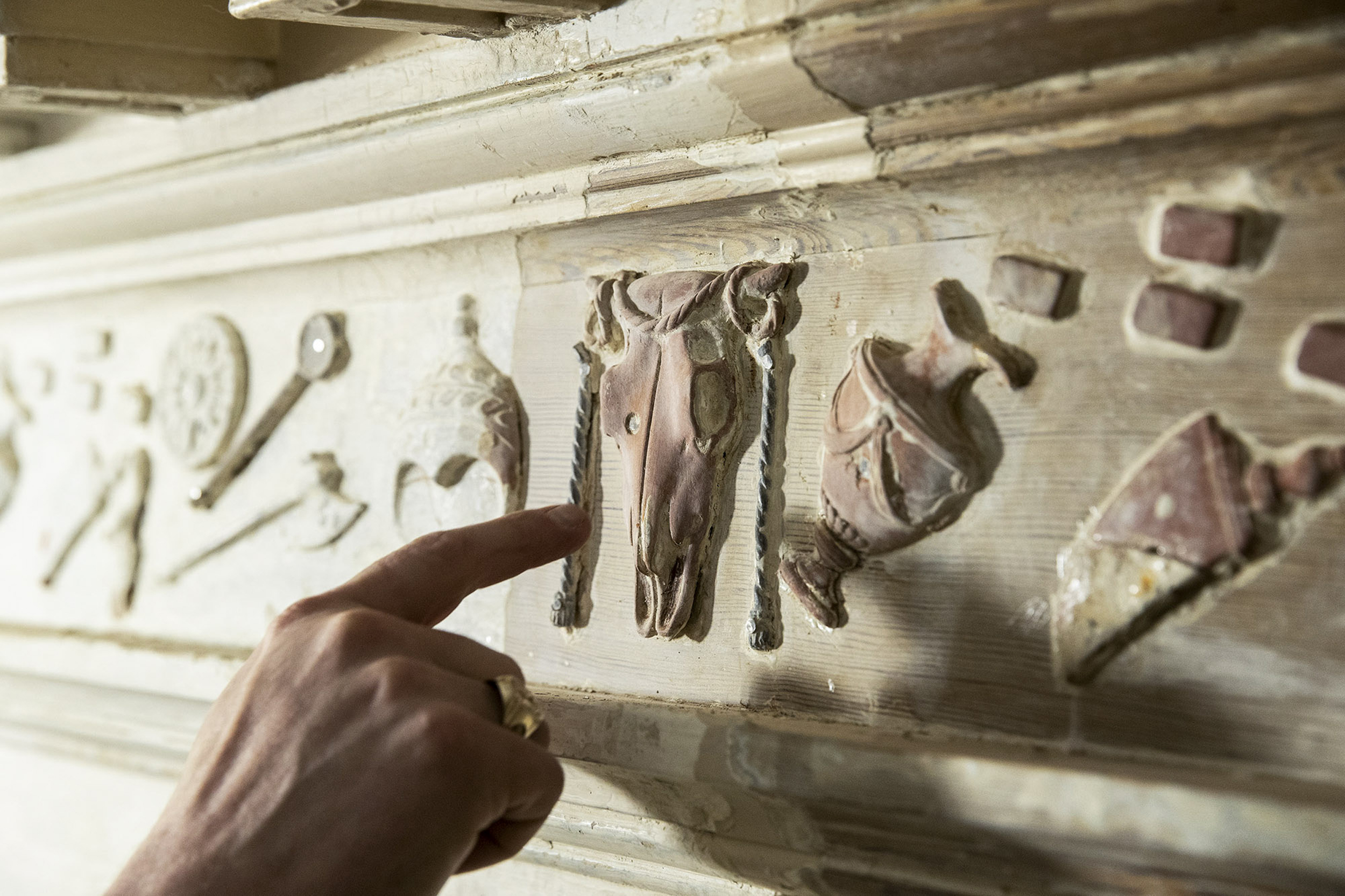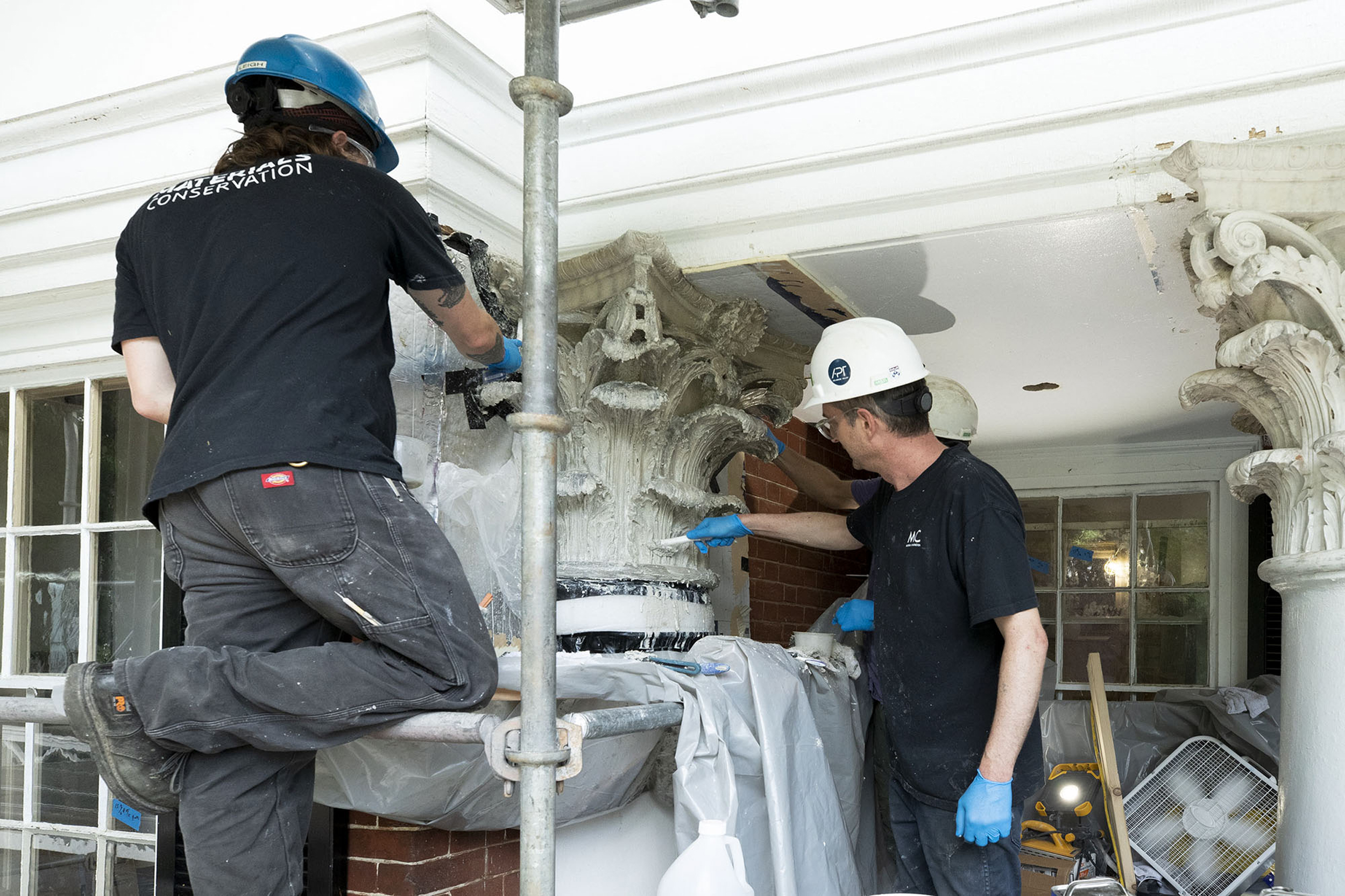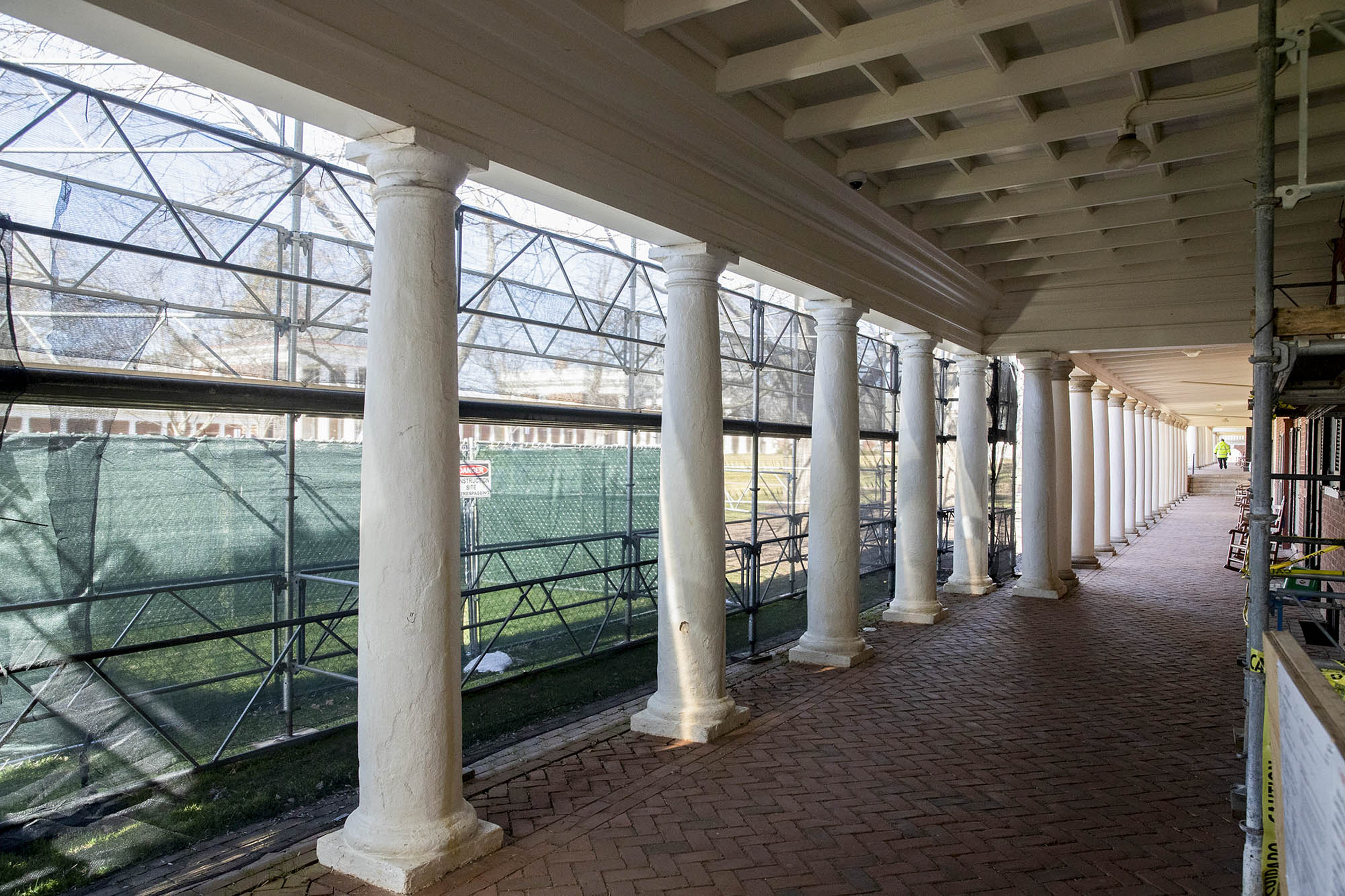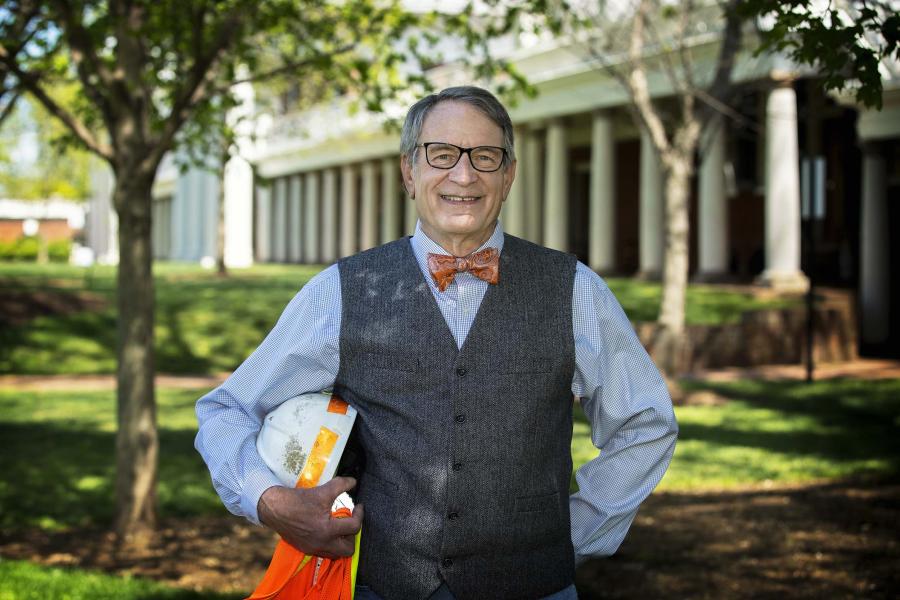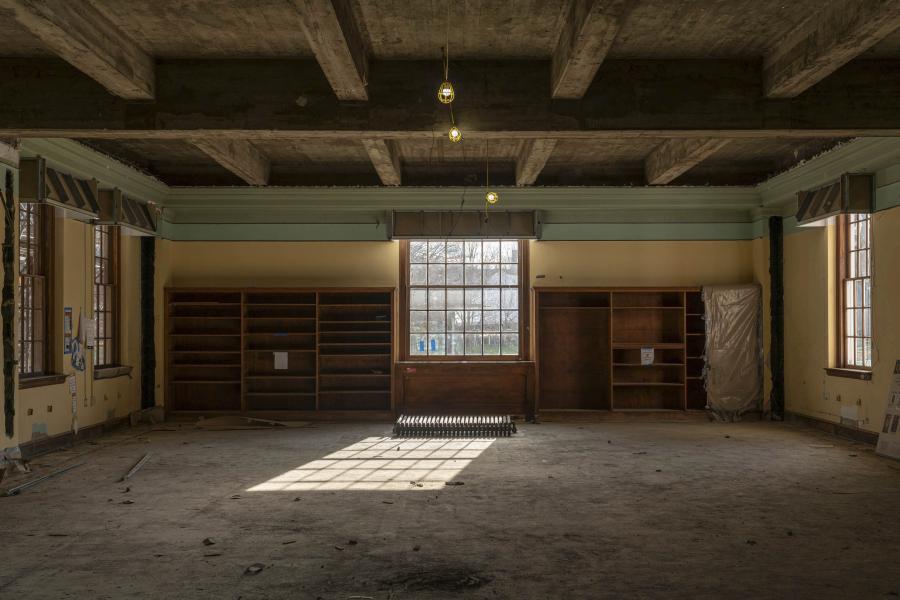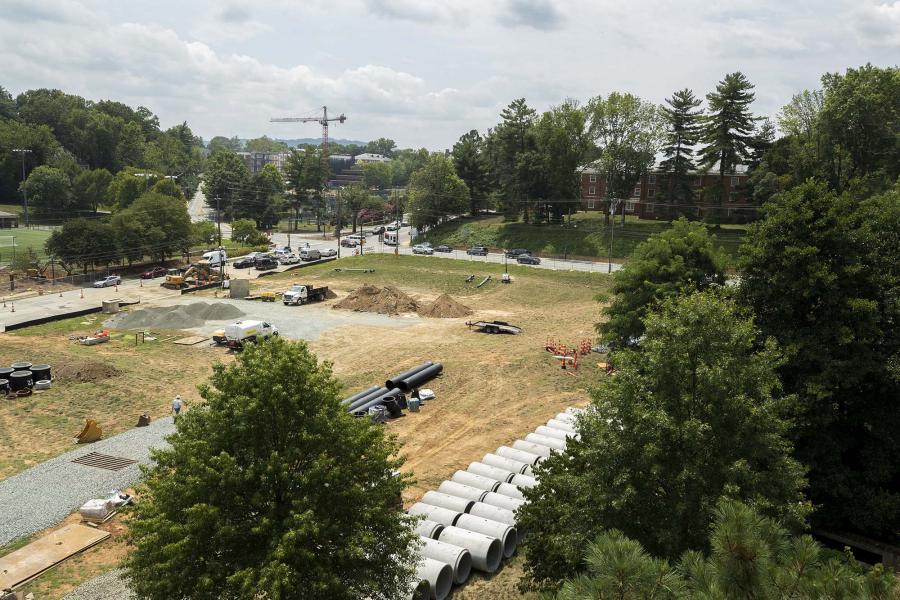What’s new under the roof? At Pavilion VIII, it is another roof.
University of Virginia employees performing a renovation of Pavilion VIII found physical evidence of a roof designed by the pavilion’s second resident, Charles Bonnycastle, a professor of natural philosophy and mathematics. (The pavilion's first resident was mathematics professor Thomas Hewitt Key.)
Project manager James Zehmer said the pavilion had originally been built with a Thomas Jefferson-designed serrated roof to give the building a flat-roof appearance. But Jefferson’s serrated roof leaked.
“We knew that Charles Bonnycastle actually designed and patented his own batten roof system,” Zehmer said. (Battens, also called roofing lath, are used to provide the fixing point for roofing materials.) “We knew that from documentary evidence. John G. Waite Associates, the project architects, also wrote the historic structure report [on Pavilion VIII], had done that research and [had] the actual patent drawings in the report. However, they did not find any physical evidence that that roof was ever put on the building.”
Recently, workers discovered some actual pieces of the Bonnycastle roof, which was installed in the 1830s.
